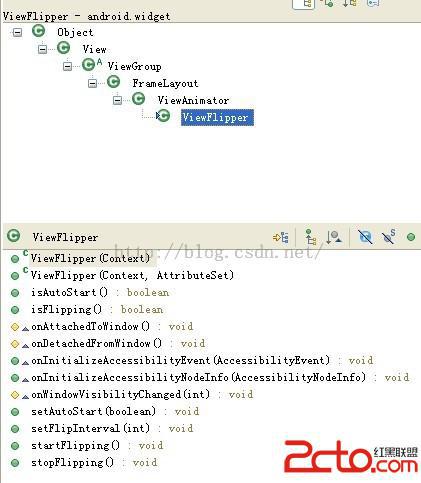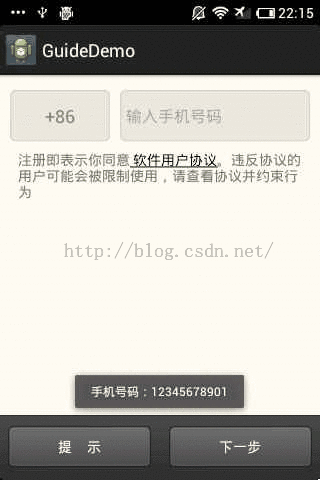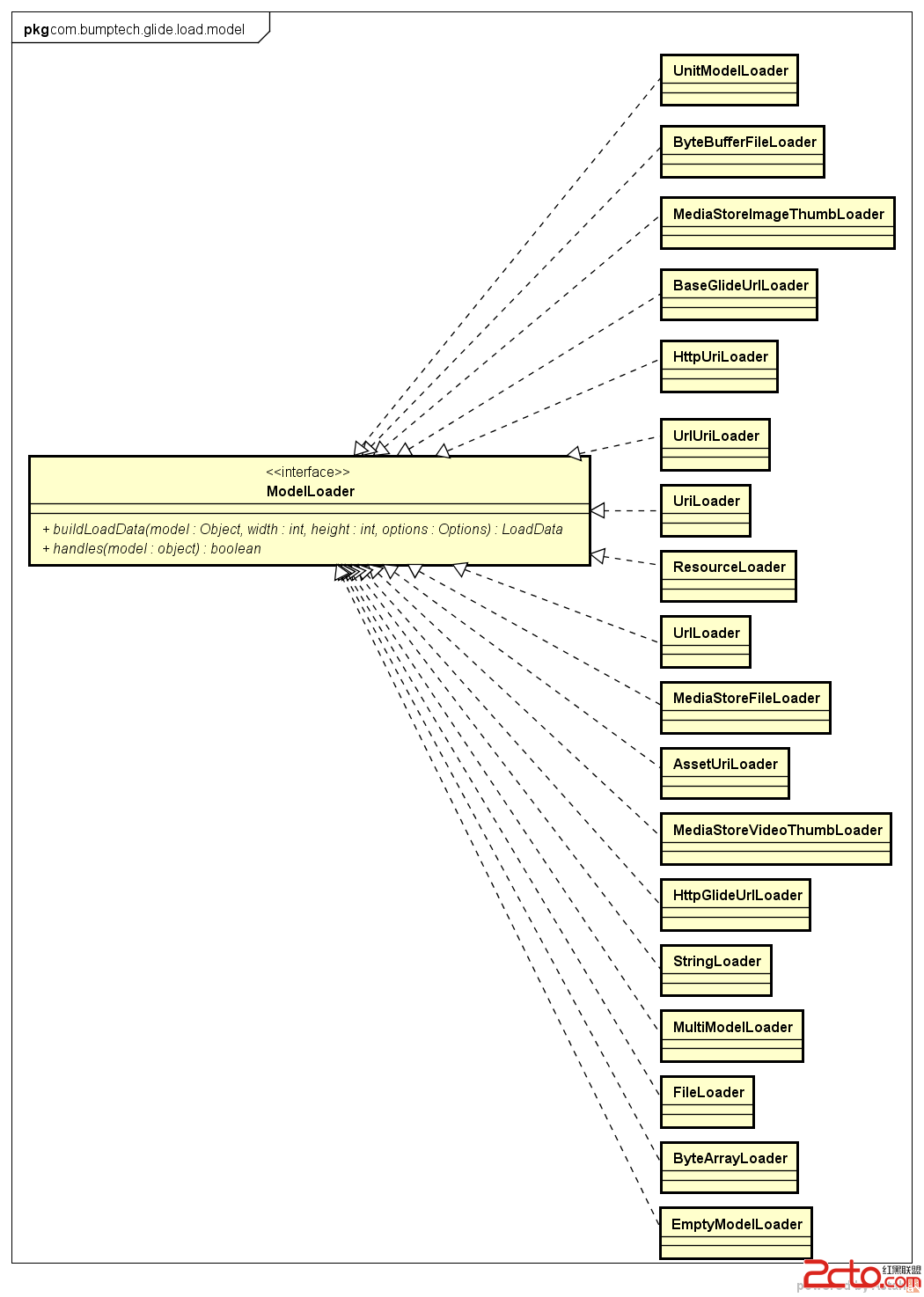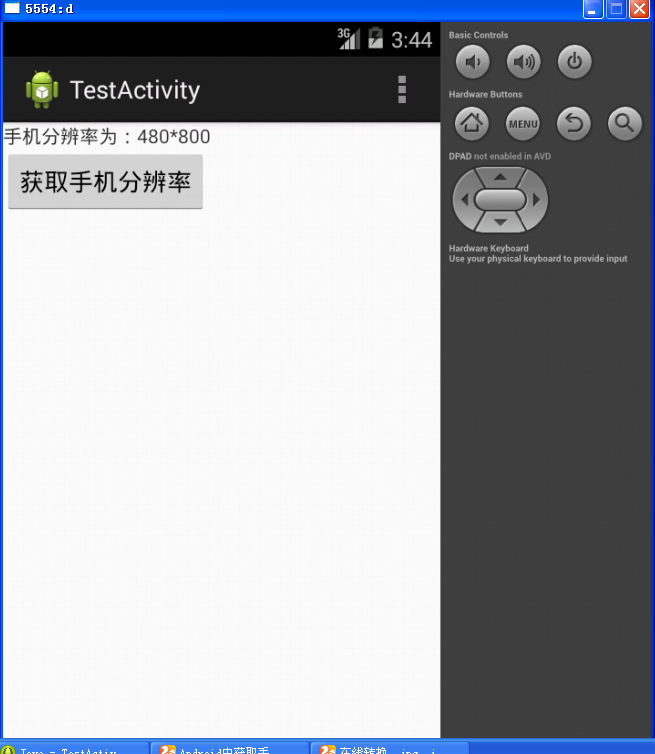編輯:關於android開發
mVfFlipper.addView(child, index);

setInAnimation:設置View進入屏幕時候使用的動畫,該函數有兩個版本,一個接受單個參數,類型為android.view.animation.Animation;一個接受兩個參數,類型為Context和int,分別為Context對象和定義Animation的resourceID。
setOutAnimation: 設置View退出屏幕時候使用的動畫,參數setInAnimation函數一樣。
showNext: 調用該函數來顯示FrameLayout裡面的下一個View。
showPrevious: 調用該函數來顯示FrameLayout裡面的上一個View。
/*
* Copyright (C) 2006 The Android Open Source Project
*
* Licensed under the Apache License, Version 2.0 (the "License");
* you may not use this file except in compliance with the License.
* You may obtain a copy of the License at
*
* http://www.apache.org/licenses/LICENSE-2.0
*
* Unless required by applicable law or agreed to in writing, software
* distributed under the License is distributed on an "AS IS" BASIS,
* WITHOUT WARRANTIES OR CONDITIONS OF ANY KIND, either express or implied.
* See the License for the specific language governing permissions and
* limitations under the License.
*/
package android.widget;
import android.content.BroadcastReceiver;
import android.content.Context;
import android.content.Intent;
import android.content.IntentFilter;
import android.content.res.TypedArray;
import android.os.Handler;
import android.os.Message;
import android.util.AttributeSet;
import android.util.Log;
import android.view.accessibility.AccessibilityEvent;
import android.view.accessibility.AccessibilityNodeInfo;
import android.widget.RemoteViews.RemoteView;
/**
* Simple {@link ViewAnimator} that will animate between two or more views
* that have been added to it. Only one child is shown at a time. If
* requested, can automatically flip between each child at a regular interval.
*
* @attr ref android.R.styleable#ViewFlipper_flipInterval
* @attr ref android.R.styleable#ViewFlipper_autoStart
*/
@RemoteView
public class ViewFlipper extends ViewAnimator {
private static final String TAG = "ViewFlipper";
private static final boolean LOGD = false;
private static final int DEFAULT_INTERVAL = 3000;
private int mFlipInterval = DEFAULT_INTERVAL;
private boolean mAutoStart = false;
private boolean mRunning = false;
private boolean mStarted = false;
private boolean mVisible = false;
private boolean mUserPresent = true;
public ViewFlipper(Context context) {
super(context);
}
public ViewFlipper(Context context, AttributeSet attrs) {
super(context, attrs);
TypedArray a = context.obtainStyledAttributes(attrs,
com.android.internal.R.styleable.ViewFlipper);
mFlipInterval = a.getInt(
com.android.internal.R.styleable.ViewFlipper_flipInterval, DEFAULT_INTERVAL);
mAutoStart = a.getBoolean(
com.android.internal.R.styleable.ViewFlipper_autoStart, false);
a.recycle();
}
private final BroadcastReceiver mReceiver = new BroadcastReceiver() {
@Override
public void onReceive(Context context, Intent intent) {
final String action = intent.getAction();
if (Intent.ACTION_SCREEN_OFF.equals(action)) {
mUserPresent = false;
updateRunning();
} else if (Intent.ACTION_USER_PRESENT.equals(action)) {
mUserPresent = true;
updateRunning(false);
}
}
};
@Override
protected void onAttachedToWindow() {
super.onAttachedToWindow();
// Listen for broadcasts related to user-presence
final IntentFilter filter = new IntentFilter();
filter.addAction(Intent.ACTION_SCREEN_OFF);
filter.addAction(Intent.ACTION_USER_PRESENT);
getContext().registerReceiver(mReceiver, filter);
if (mAutoStart) {
// Automatically start when requested
startFlipping();
}
}
@Override
protected void onDetachedFromWindow() {
super.onDetachedFromWindow();
mVisible = false;
getContext().unregisterReceiver(mReceiver);
updateRunning();
}
@Override
protected void onWindowVisibilityChanged(int visibility) {
super.onWindowVisibilityChanged(visibility);
mVisible = visibility == VISIBLE;
updateRunning(false);
}
/**
* How long to wait before flipping to the next view
*
* @param milliseconds
* time in milliseconds
*/
@android.view.RemotableViewMethod
public void setFlipInterval(int milliseconds) {
mFlipInterval = milliseconds;
}
/**
* Start a timer to cycle through child views
*/
public void startFlipping() {
mStarted = true;
updateRunning();
}
/**
* No more flips
*/
public void stopFlipping() {
mStarted = false;
updateRunning();
}
@Override
public void onInitializeAccessibilityEvent(AccessibilityEvent event) {
super.onInitializeAccessibilityEvent(event);
event.setClassName(ViewFlipper.class.getName());
}
@Override
public void onInitializeAccessibilityNodeInfo(AccessibilityNodeInfo info) {
super.onInitializeAccessibilityNodeInfo(info);
info.setClassName(ViewFlipper.class.getName());
}
/**
* Internal method to start or stop dispatching flip {@link Message} based
* on {@link #mRunning} and {@link #mVisible} state.
*/
private void updateRunning() {
updateRunning(true);
}
/**
* Internal method to start or stop dispatching flip {@link Message} based
* on {@link #mRunning} and {@link #mVisible} state.
*
* @param flipNow Determines whether or not to execute the animation now, in
* addition to queuing future flips. If omitted, defaults to
* true.
*/
private void updateRunning(boolean flipNow) {
boolean running = mVisible && mStarted && mUserPresent;
if (running != mRunning) {
if (running) {
showOnly(mWhichChild, flipNow);
Message msg = mHandler.obtainMessage(FLIP_MSG);
mHandler.sendMessageDelayed(msg, mFlipInterval);
} else {
mHandler.removeMessages(FLIP_MSG);
}
mRunning = running;
}
if (LOGD) {
Log.d(TAG, "updateRunning() mVisible=" + mVisible + ", mStarted=" + mStarted
+ ", mUserPresent=" + mUserPresent + ", mRunning=" + mRunning);
}
}
/**
* Returns true if the child views are flipping.
*/
public boolean isFlipping() {
return mStarted;
}
/**
* Set if this view automatically calls {@link #startFlipping()} when it
* becomes attached to a window.
*/
public void setAutoStart(boolean autoStart) {
mAutoStart = autoStart;
}
/**
* Returns true if this view automatically calls {@link #startFlipping()}
* when it becomes attached to a window.
*/
public boolean isAutoStart() {
return mAutoStart;
}
private final int FLIP_MSG = 1;
private final Handler mHandler = new Handler() {
@Override
public void handleMessage(Message msg) {
if (msg.what == FLIP_MSG) {
if (mRunning) {
showNext();
msg = obtainMessage(FLIP_MSG);
sendMessageDelayed(msg, mFlipInterval);
}
}
}
};
}
下載地址:點擊

 Android Glide源碼解析
Android Glide源碼解析
Android Glide源碼解析 功能介紹 使用文章介紹以及和Picasso的對比分析請參考Introduction to Glide, Image Loader
 Android插件化(使用Small框架)
Android插件化(使用Small框架)
Android插件化(使用Small框架) Android插件化(使用Small框架) 框架源碼 1. Create Project File->New->
 Android手機屏幕大小的獲取,android屏幕獲取
Android手機屏幕大小的獲取,android屏幕獲取
Android手機屏幕大小的獲取,android屏幕獲取package com.example.testactivity; import android.app.Act
 Android中Dialog對話框,androiddialog
Android中Dialog對話框,androiddialog
Android中Dialog對話框,androiddialog布局文件xml: 1 <LinearLayout xmlns:android=http://sc